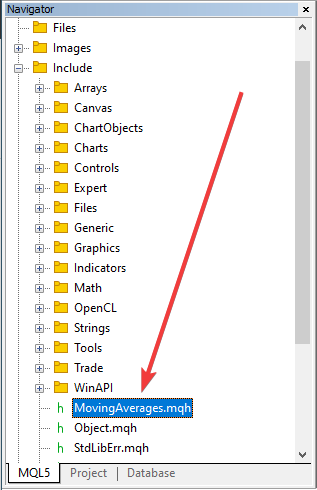Look at MovingAverages.mqh in the Include directory.

I think the code in MovingAverages.mqh is easier to understand than the code you showed
//+------------------------------------------------------------------+ //| Simple Moving Average | //+------------------------------------------------------------------+ double SimpleMA(const int position,const int period,const double &price[]) { double result=0.0; //--- check period if(period>0 && period<=(position+1)) { for(int i=0; i<period; i++) result+=price[position-i]; result/=period; } return(result); }
Vladislav Boyko #: I think the code in MovingAverages.mqh is easier to understand than the code you showed
Or Sum multiple elements of a large array - MQL4 programming forum #2.2 (2023)
No answers to my question yet, but I guess that's OK. I overlaid the stock Moving Average indicator from the menu with the Custom Moving Average indicator from the Examples folder and, yup, they match perfectly. So, I have the answer to my question. I'll have to ask my son the mathematician to explain why it works.
You are missing trading opportunities:
- Free trading apps
- Over 8,000 signals for copying
- Economic news for exploring financial markets
Registration
Log in
You agree to website policy and terms of use
If you do not have an account, please register
I've been looking at the Custom Moving Average.mq5 code that is in the Indicators\Examples folder.
My understanding of the calculation of a simple moving average is as follows:
Let's say the MA period = 5. That means go 5 bars back, sum the values of those 5 bars plus the current bar and divide by the MA period plus 1, doesn't it? So the divisor would be 6. Am I wrong?
This code from the CalculateSimpleMA function in Custom Moving Average.mq5isn't what I expected.
Is the line repeatedly executed in the for loop below actually the equivalent of the formula above? Previous bar price + (current price + the price MA-period bars back) / MA-period?